MARKETING
6 Steps to Create Them + Brand Examples

Recently, I was scrolling online and I came across an ad for Narcos. While I can easily ignore most banner ads online, this one stood out. It included interesting videos and animation.
This was a prime example of rich media ads. A rich media ad is an excellent, modern ad format for marketers to consider.
In fact, one 2018 study found that rich media ads outperform standard banner ads by 267%.
With statistics like that, it’s time to consider incorporating these ads into your paid media strategy.
Below, let’s discuss what rich media ads are and how they’re different from other ad formats. Then, we’ll review how to create one for your company and look at some examples to inspire your own ad campaigns.
What are rich media ads?
Rich media ads are interactive ads that include multimedia features, such as video, audio, animation as well as traditional elements like text and images. These ads offer ways to engage and involve the audience to increase brand awareness and generate clicks.
Rich media ads usually take much more time, effort, and capital to create.
Why? Well, a static ad typically includes only three elements: An image, a CTA, copy. Rich media ads, on the other hand, can incorporate various multimedia elements and allow users to interact in multiple ways.
So, why do brands use rich media ads?
Well, rich media ads are engaging and dynamic in a way that other ad types aren’t. They usually lead to more interaction, increased conversions, and a higher clickthrough rate.
Since many people have banner blindness like me, creating an ad that your audience wants to interact with isn’t easy. Rich media ads are a great way to create a better user experience.
Rich Media Types
1. Banner Ads
There are two main types of banner ads for rich media: in-banner and expanding.
In-banner ads show up as regular banners and have interactive features, such as slide/scroll options. They can also include videos, audio, and animation.

This banner ad from CB2 is a rich media example that displays various products from the brand’s collections.
In-banner ads stay exactly where they are and can be ignored more easily.
Expanding ads, on the other hand, expand when the user has taken a particular action (usually a click). Pushdown ads, multidirectional, and floating ads are all examples of expanding ads that animate across the page for a few seconds.

A floating ad is a great way to get a user’s attention, without disrupting the user experience.
2. Interstitial Ads
An interstitial ad – think pop-ups and modals – is a full-page ad that covers the publisher’s interface. It’s commonly used on mobile apps, during points of transition in the user flow.

For instance, it might show up on a video game app when you click “Play Again.” In some cases, the ad may not show an exit button until a few seconds after it initially appeared.
Using this type of ad is tricky, as Google sets strict guidelines on how it can work to avoid disrupting the user experience.
3. Lightbox
Lightbox ads are interactive ads that expand and use a combination of media (images, video, illustrations) to capture the viewer’s attention.

Similar to a floating ad, they usually start small on the sidebar of a page and expand once a user clicks on it.
From there, users can take multiple actions to interact with the ad. It creates a richer ad-viewing experience and as such, can require a little bit more work to create.
How are rich media ads different from other ad formats?
Rich media ads are different from other ad formats because they’re interactive and include engaging multimedia elements including audio, video, or animation. On the other hand, other ad formats like static only including text and images.
Now, you might be wondering, “How do I go about creating a rich media ad?” Below, let’s discuss how you can get started with rich media ads.
How to Create Rich Media Ads in 6 Steps
- Get inspired.
- Decide on the strategy.
- Plan the creative assets.
- Use ad creation tools.
- Test and preview.
- Track and measure success.
1. Get inspired.
If you’ve never created a rich media ad before, it can be helpful to get inspiration from other brands, including your competitors.
What type of rich media ads are they using? Is it mostly video or a combination of text and animation? What does their copy look like?
You should ask yourself, “How is this particular ad experience?” It’s important to note this, as you’ll want to create an experience that will resonate with your audience.
So, as you navigate through websites, pay closer attention to the ads you see. Then, start compiling your favorite ones in a document to help spark ideas for your own.
2. Decide on the strategy.
Now that you have an idea of what you want to create, it’s time to strategize.
What are your goals for this campaign? This will determine which creative assets you create and which type of rich media ad you use. This process will also help you discover the best way to engage your audience.
During this step, take a look back at previous ad campaigns. What are some trends in your highest- and lowest-performing ads? Getting a refresher on past performance is a good starting point for your next campaign.
3. Plan your creative assets.
Once you know more about your strategy, it’s time to list the creative assets you’ll need to get it done. Whether you’re creating rich media banner, interstitial, or lightbox ads, there are three components to your ad:
- Visuals: animations, videos, images, illustrations.
- Copy
- Call to action (CTA)
Oh, and don’t forget the assets for your landing page. Creating the ad is one thing, your landing page is where users will convert so it needs to be a priority as well.
With all these elements in mind, start big then go small.
Say you choose video as your rich media type, will it be completed in-house or with an outside agency? Or will you use stock footage? Every scenario requires a different set of steps.
Additionally, you might think about how to make the ad interactive. Will users be able to click through to another slide on your ad? What happens if they click on the ad? It’s important to discuss and plan these elements out before you create your ad.
4. Use ad creation tools.
At this point, you’ll have your strategy and assets all done. So, how do you actually build the ad?
If you don’t have a graphic designer on your team, you can use online tools to help you create a rich media ad.
For example, there’s Google’s Rich Media Gallery. On this site, you can create sophisticated rich media ads for free. While there are ready-to-use templates, you can also customize them by using your own creative assets.
However, if you have a graphic designer, you’ll want to meet with them at the beginning of your process so they know what you have in mind and can tell you if it’s doable.
You may also want to rely on video marketing tools such as Idomoo and Wistia to create targeted ads that reach your desired audience.
5. Preview your ad.
Now that you have created your ad, check that everything will run smoothly once it’s live.
The first step is ensuring that your ad meets the guidelines set by your advertising platform, like Google Ads.
Most ad platforms have an approval process before your ad can go live on a publisher’s site. If your ad is rejected, you may have an opportunity to make changes to it and re-submit it for approval.
Then, preview your ad to make sure it’s performing as expected. Some platforms allow you to share the preview with collaborators for feedback.
6. Track and measure your success.
When your ad is created, it’s time to start running it.
You can use rich media ads on social media platforms like LinkedIn, Facebook, and Instagram. You can include them on search engines, like Google Ads and Bing Ads.
Once you’ve started to run your ads, don’t forget to monitor their performance and make changes as necessary. If you’ve run static display ads in the past, it will be helpful to compare and see which type offers a higher return on investment.
Now, you might be wondering, “What will this look like?” Let’s review some examples of rich media ads in action below.
6 Examples of Rich Media Ads
1. Discover
This is a great example of a rich media ad that catches your attention and invites you to engage.

When you first see the ad, you immediately notice the logo, the copy, and the CTA on the left-hand side. Once you engage with the ad, the video starts playing and the volume button is displayed.
Why it works: Even without playing the video, you get the key information you need: The brand, the message, the CTA.
2. Reformation
Like many online retailers, Reformation uses retargeting ads to attract web visitors to its website.
In this rich media ad, users can see products from the brand and will be redirected right to the product page after clicking the “Shop It” CTA.
What works well here: Users can not only see top products from the brand but also use the interactive hover feature to shop specific items.
3. GEHA
GEHA’s video ad hits all the key points needed to create an effective rich media ad
The first thing you notice is the high-quality video and visuals. The use of colors, icons, and hierarchy to highlight key messages is definitely effective.
In addition to being eye-catching, it’s to the point. Brands typically have very few seconds to catch a user’s eye as they navigate a page. With this in mind, make sure every frame in your video serves a purpose.
4. Jessica London
In this Jessica London ad example, the brand uses movement to its advantage.

It’s a great but simple way to make a static image more dynamic and engaging. Additionally, moving ads are eye-catching in a way that static images aren’t.
The takeaway: If you can’t invest in visuals other than images, try having multiple slides in your ad with each slide featuring a different image and text.
5. Lincoln Aviator

When Lincoln decided to create an ad for the new Aviator car, they wanted it to be interactive.
When you click on this ad, you’ll be brought to a separate slide. This image is an interactive guide to the features of the car. You can click on different areas of the car to learn more about it.
This is a great example of how rich media ads are engaging and interactive. The audience can click on the ad and learn more about the car without being brought to a new webpage.
6. Netflix

This is the rich media ad by Netflix that I was talking about before. This ad includes a unique video from the actors and is presented almost like a trailer.
Then, if you hover over the image, the audience will see moving images that rotate. Additionally, if you click the ad, you can watch the actual trailer for the Netflix show. This is a great rich media ad that includes several media formats to engage the viewer.
Rich media ads are an amazing way to engage and interact with your audience. In an age where audiences have banner blindness, rich media ads are a great way to get your audience’s attention.
The Benefits of Rich Media in Your Advertising Strategy
Using rich media ads is sure to add another dimension to your campaign and help you understand what works best with your audience.
Here are the top benefits of using rich media:
- Potential for a higher clickthrough rate – Rich media ads can be more interactive and eye-catching, making users more likely to click on your ad. They can also offer better brand recall if delivered effectively.
- Versatility in ads – Diversifying your campaign ads is helpful in discovering what your target audience connects with and which ad types convert best.
- Better insights – Because of the multiple layers you can add to your rich media ads, you can gain more insights into your audience. Video watch times, clickthrough rates, pre-interaction engagement rates are all metrics you can use to understand your ad performance.
If you’ve never run a rich media ad, this is your sign. You may find that it outperforms your static ads.
Editor’s Note: This post was originally published in __ and has been updated for comprehensiveness.
Source link
MARKETING
YouTube Ad Specs, Sizes, and Examples [2024 Update]
![YouTube Ad Specs, Sizes, and Examples [2024 Update] YouTube Ad Specs, Sizes, and Examples](https://articles.entireweb.com/wp-content/uploads/2024/06/YouTube-Ad-Specs-Sizes-and-Examples.jpg)
Introduction
With billions of users each month, YouTube is the world’s second largest search engine and top website for video content. This makes it a great place for advertising. To succeed, advertisers need to follow the correct YouTube ad specifications. These rules help your ad reach more viewers, increasing the chance of gaining new customers and boosting brand awareness.
Types of YouTube Ads
Video Ads
- Description: These play before, during, or after a YouTube video on computers or mobile devices.
- Types:
- In-stream ads: Can be skippable or non-skippable.
- Bumper ads: Non-skippable, short ads that play before, during, or after a video.
Display Ads
- Description: These appear in different spots on YouTube and usually use text or static images.
- Note: YouTube does not support display image ads directly on its app, but these can be targeted to YouTube.com through Google Display Network (GDN).
Companion Banners
- Description: Appears to the right of the YouTube player on desktop.
- Requirement: Must be purchased alongside In-stream ads, Bumper ads, or In-feed ads.
In-feed Ads
- Description: Resemble videos with images, headlines, and text. They link to a public or unlisted YouTube video.
Outstream Ads
- Description: Mobile-only video ads that play outside of YouTube, on websites and apps within the Google video partner network.
Masthead Ads
- Description: Premium, high-visibility banner ads displayed at the top of the YouTube homepage for both desktop and mobile users.
YouTube Ad Specs by Type
Skippable In-stream Video Ads
- Placement: Before, during, or after a YouTube video.
- Resolution:
- Horizontal: 1920 x 1080px
- Vertical: 1080 x 1920px
- Square: 1080 x 1080px
- Aspect Ratio:
- Horizontal: 16:9
- Vertical: 9:16
- Square: 1:1
- Length:
- Awareness: 15-20 seconds
- Consideration: 2-3 minutes
- Action: 15-20 seconds
Non-skippable In-stream Video Ads
- Description: Must be watched completely before the main video.
- Length: 15 seconds (or 20 seconds in certain markets).
- Resolution:
- Horizontal: 1920 x 1080px
- Vertical: 1080 x 1920px
- Square: 1080 x 1080px
- Aspect Ratio:
- Horizontal: 16:9
- Vertical: 9:16
- Square: 1:1
Bumper Ads
- Length: Maximum 6 seconds.
- File Format: MP4, Quicktime, AVI, ASF, Windows Media, or MPEG.
- Resolution:
- Horizontal: 640 x 360px
- Vertical: 480 x 360px
In-feed Ads
- Description: Show alongside YouTube content, like search results or the Home feed.
- Resolution:
- Horizontal: 1920 x 1080px
- Vertical: 1080 x 1920px
- Square: 1080 x 1080px
- Aspect Ratio:
- Horizontal: 16:9
- Square: 1:1
- Length:
- Awareness: 15-20 seconds
- Consideration: 2-3 minutes
- Headline/Description:
- Headline: Up to 2 lines, 40 characters per line
- Description: Up to 2 lines, 35 characters per line
Display Ads
- Description: Static images or animated media that appear on YouTube next to video suggestions, in search results, or on the homepage.
- Image Size: 300×60 pixels.
- File Type: GIF, JPG, PNG.
- File Size: Max 150KB.
- Max Animation Length: 30 seconds.
Outstream Ads
- Description: Mobile-only video ads that appear on websites and apps within the Google video partner network, not on YouTube itself.
- Logo Specs:
- Square: 1:1 (200 x 200px).
- File Type: JPG, GIF, PNG.
- Max Size: 200KB.
Masthead Ads
- Description: High-visibility ads at the top of the YouTube homepage.
- Resolution: 1920 x 1080 or higher.
- File Type: JPG or PNG (without transparency).
Conclusion
YouTube offers a variety of ad formats to reach audiences effectively in 2024. Whether you want to build brand awareness, drive conversions, or target specific demographics, YouTube provides a dynamic platform for your advertising needs. Always follow Google’s advertising policies and the technical ad specs to ensure your ads perform their best. Ready to start using YouTube ads? Contact us today to get started!
MARKETING
Why We Are Always ‘Clicking to Buy’, According to Psychologists

Amazon pillows.
MARKETING
A deeper dive into data, personalization and Copilots
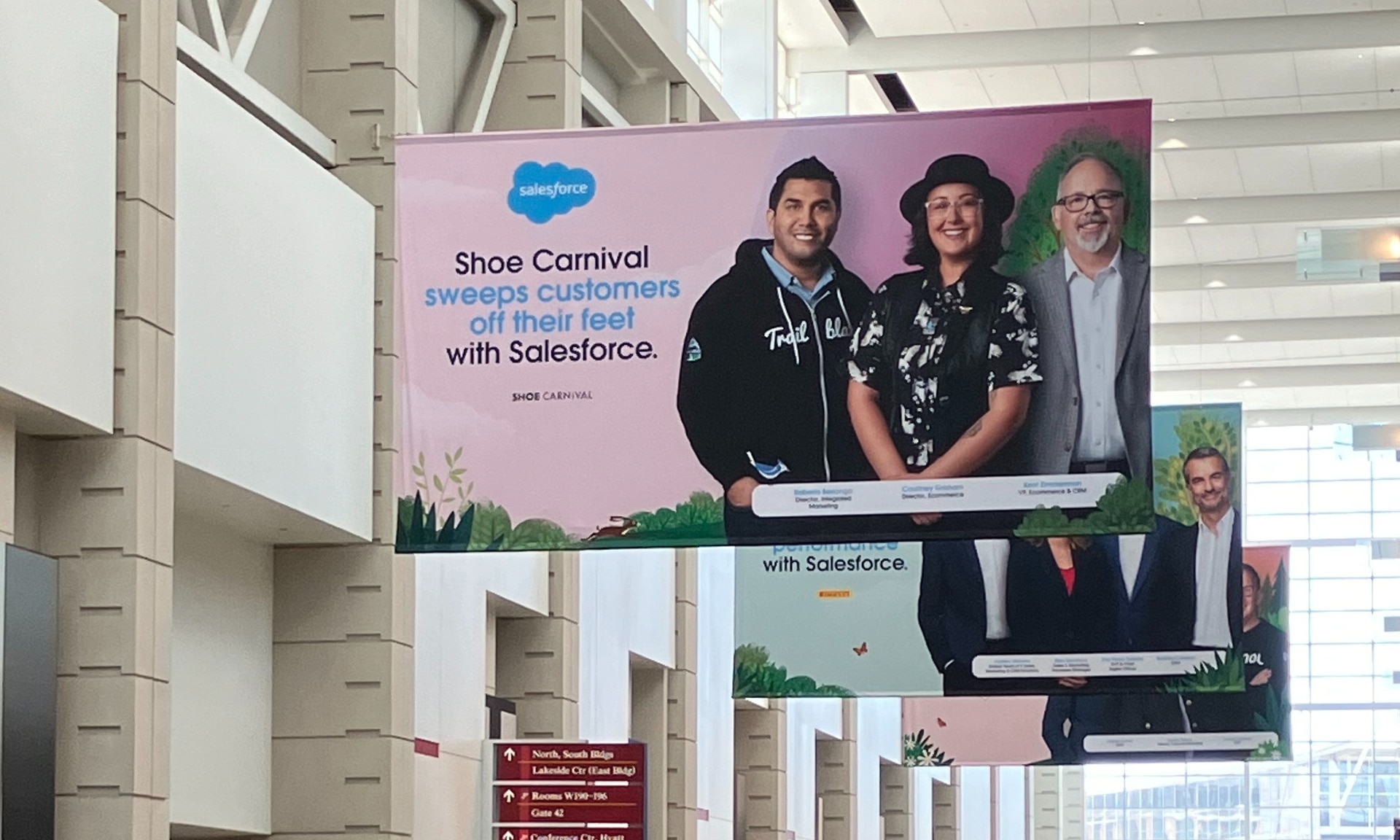
Salesforce launched a collection of new, generative AI-related products at Connections in Chicago this week. They included new Einstein Copilots for marketers and merchants and Einstein Personalization.
To better understand, not only the potential impact of the new products, but the evolving Salesforce architecture, we sat down with Bobby Jania, CMO, Marketing Cloud.
Dig deeper: Salesforce piles on the Einstein Copilots
Salesforce’s evolving architecture
It’s hard to deny that Salesforce likes coming up with new names for platforms and products (what happened to Customer 360?) and this can sometimes make the observer wonder if something is brand new, or old but with a brand new name. In particular, what exactly is Einstein 1 and how is it related to Salesforce Data Cloud?
“Data Cloud is built on the Einstein 1 platform,” Jania explained. “The Einstein 1 platform is our entire Salesforce platform and that includes products like Sales Cloud, Service Cloud — that it includes the original idea of Salesforce not just being in the cloud, but being multi-tenancy.”
Data Cloud — not an acquisition, of course — was built natively on that platform. It was the first product built on Hyperforce, Salesforce’s new cloud infrastructure architecture. “Since Data Cloud was on what we now call the Einstein 1 platform from Day One, it has always natively connected to, and been able to read anything in Sales Cloud, Service Cloud [and so on]. On top of that, we can now bring in, not only structured but unstructured data.”
That’s a significant progression from the position, several years ago, when Salesforce had stitched together a platform around various acquisitions (ExactTarget, for example) that didn’t necessarily talk to each other.
“At times, what we would do is have a kind of behind-the-scenes flow where data from one product could be moved into another product,” said Jania, “but in many of those cases the data would then be in both, whereas now the data is in Data Cloud. Tableau will run natively off Data Cloud; Commerce Cloud, Service Cloud, Marketing Cloud — they’re all going to the same operational customer profile.” They’re not copying the data from Data Cloud, Jania confirmed.
Another thing to know is tit’s possible for Salesforce customers to import their own datasets into Data Cloud. “We wanted to create a federated data model,” said Jania. “If you’re using Snowflake, for example, we more or less virtually sit on your data lake. The value we add is that we will look at all your data and help you form these operational customer profiles.”
Let’s learn more about Einstein Copilot
“Copilot means that I have an assistant with me in the tool where I need to be working that contextually knows what I am trying to do and helps me at every step of the process,” Jania said.
For marketers, this might begin with a campaign brief developed with Copilot’s assistance, the identification of an audience based on the brief, and then the development of email or other content. “What’s really cool is the idea of Einstein Studio where our customers will create actions [for Copilot] that we hadn’t even thought about.”
Here’s a key insight (back to nomenclature). We reported on Copilot for markets, Copilot for merchants, Copilot for shoppers. It turns out, however, that there is just one Copilot, Einstein Copilot, and these are use cases. “There’s just one Copilot, we just add these for a little clarity; we’re going to talk about marketing use cases, about shoppers’ use cases. These are actions for the marketing use cases we built out of the box; you can build your own.”
It’s surely going to take a little time for marketers to learn to work easily with Copilot. “There’s always time for adoption,” Jania agreed. “What is directly connected with this is, this is my ninth Connections and this one has the most hands-on training that I’ve seen since 2014 — and a lot of that is getting people using Data Cloud, using these tools rather than just being given a demo.”
What’s new about Einstein Personalization
Salesforce Einstein has been around since 2016 and many of the use cases seem to have involved personalization in various forms. What’s new?
“Einstein Personalization is a real-time decision engine and it’s going to choose next-best-action, next-best-offer. What is new is that it’s a service now that runs natively on top of Data Cloud.” A lot of real-time decision engines need their own set of data that might actually be a subset of data. “Einstein Personalization is going to look holistically at a customer and recommend a next-best-action that could be natively surfaced in Service Cloud, Sales Cloud or Marketing Cloud.”
Finally, trust
One feature of the presentations at Connections was the reassurance that, although public LLMs like ChatGPT could be selected for application to customer data, none of that data would be retained by the LLMs. Is this just a matter of written agreements? No, not just that, said Jania.
“In the Einstein Trust Layer, all of the data, when it connects to an LLM, runs through our gateway. If there was a prompt that had personally identifiable information — a credit card number, an email address — at a mimum, all that is stripped out. The LLMs do not store the output; we store the output for auditing back in Salesforce. Any output that comes back through our gateway is logged in our system; it runs through a toxicity model; and only at the end do we put PII data back into the answer. There are real pieces beyond a handshake that this data is safe.”
-

 WORDPRESS3 days ago
WORDPRESS3 days agoWordPress biz Automattic details WP Engine deal demands • The Register
-
SEARCHENGINES5 days ago
Daily Search Forum Recap: September 30, 2024
-

 SEO7 days ago
SEO7 days agoYoast Co-Founder Suggests A WordPress Contributor Board
-
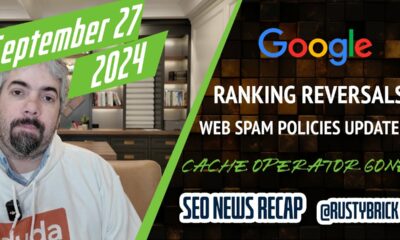
 SEARCHENGINES6 days ago
SEARCHENGINES6 days agoGoogle Volatility With Gains & Losses, Updated Web Spam Policies, Cache Gone & More Search News
-

 SEO7 days ago
SEO7 days ago6 Things You Can Do to Compete With Big Sites
-
SEARCHENGINES4 days ago
Daily Search Forum Recap: October 1, 2024
-

 SEO6 days ago
SEO6 days agoAn In-Depth Guide For Businesses
-

 AFFILIATE MARKETING6 days ago
AFFILIATE MARKETING6 days agoNvidia CEO Jensen Huang Praises Nuclear Energy to Power AI





![How to Create A Website to Sell Products In 8 Steps [+6 Expert Tips] How to Create A Website to Sell Products In 8 Steps [+6 Expert Tips]](https://articles.entireweb.com/wp-content/uploads/2024/10/1727868370_How-to-Create-A-Website-to-Sell-Products-In-8.webp-400x240.webp)
![How to Create A Website to Sell Products In 8 Steps [+6 Expert Tips] How to Create A Website to Sell Products In 8 Steps [+6 Expert Tips]](https://articles.entireweb.com/wp-content/uploads/2024/10/1727868370_How-to-Create-A-Website-to-Sell-Products-In-8.webp-80x80.webp)
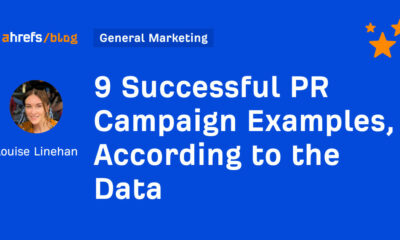



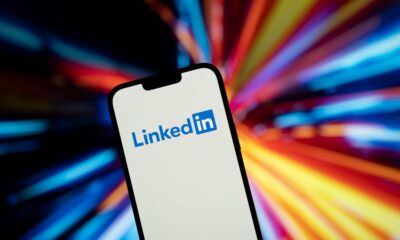



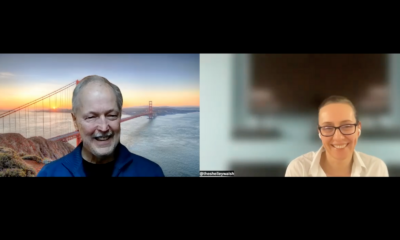


You must be logged in to post a comment Login